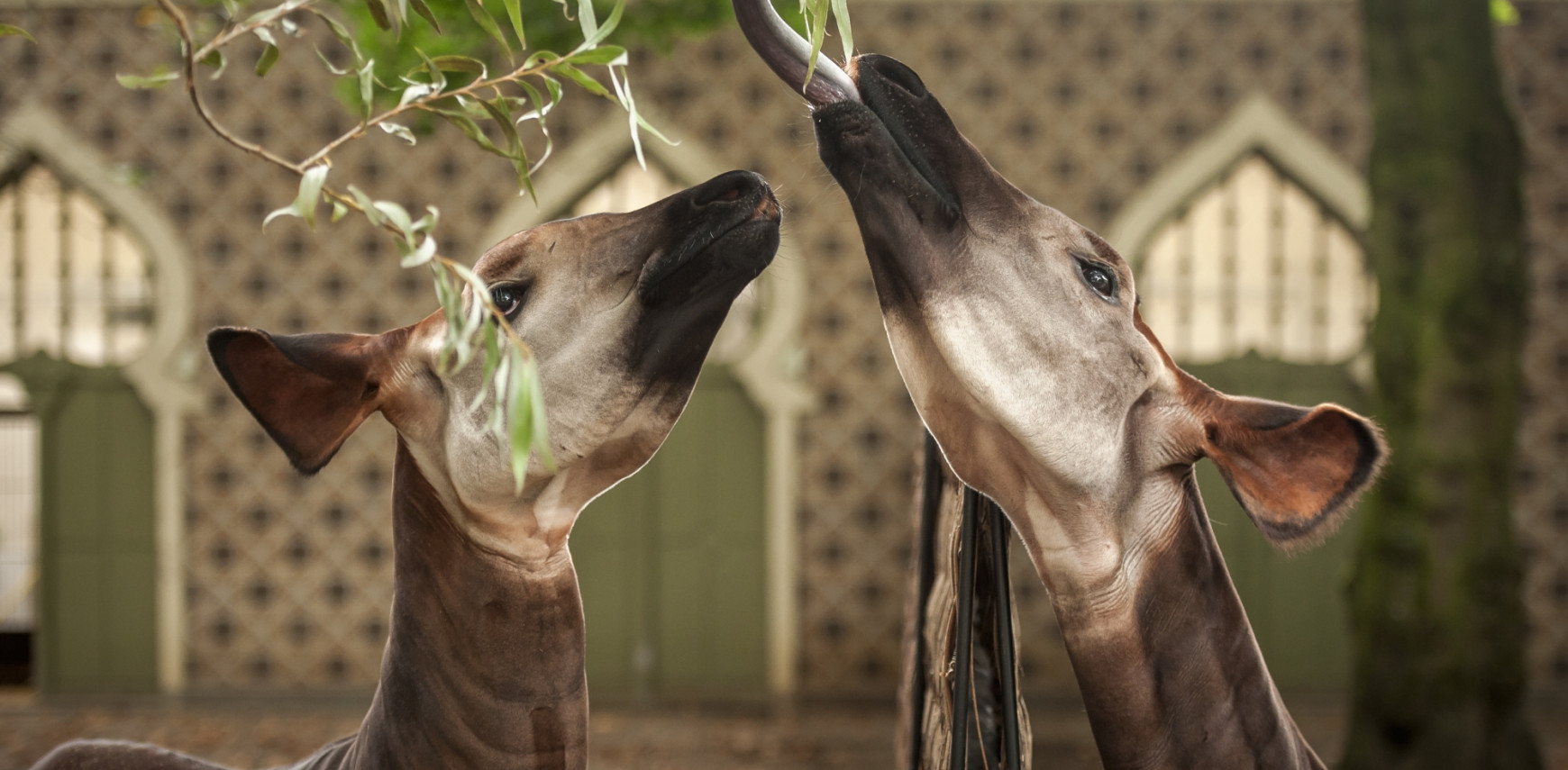Okapi
Okapi (Okapia johnstoni) are only found in the wild in the North East of the Democratic Republic of Congo (DRC). It is unknown how many okapi remain in the wild. The impenetrable rainforest in this conflict-ridden region of Central Africa makes accurate counting both difficult and often dangerous. Rough estimates suggest a population of around 15,000. Due to the decline in numbers, okapi were declared an endangered species in 2015. Illegal mining and forestry activities and hunting practically anything alive in the forest, in particular, puts an enormous strain on the population. Despite the fact that there are no plans to reintroduce okapi in the wild yet, we do manage the zoo population as an insurance population which could possibly be released in the wild in the future.
By agreeing to annually contribute to the funding of the Okapi Wildlife Reserve in the Ituri Forest in the North East of the DRC, zoos contribute not only to the conservation of one species, the okapi, but also to the conservation of a unique ecosystem and all its inhabitants. Besides creating an insurance population for the wild population, the okapi bred in zoos also serve as ambassadors for the Congolese rainforest and its inhabitants.
As international studbook keeper and coordinator of the European population management programme, our curator Sander Hofman is responsible for advising on how the okapi in the EEP can best be managed to maintain a genetically and demographically healthy population based, among other things, on scientific research.

